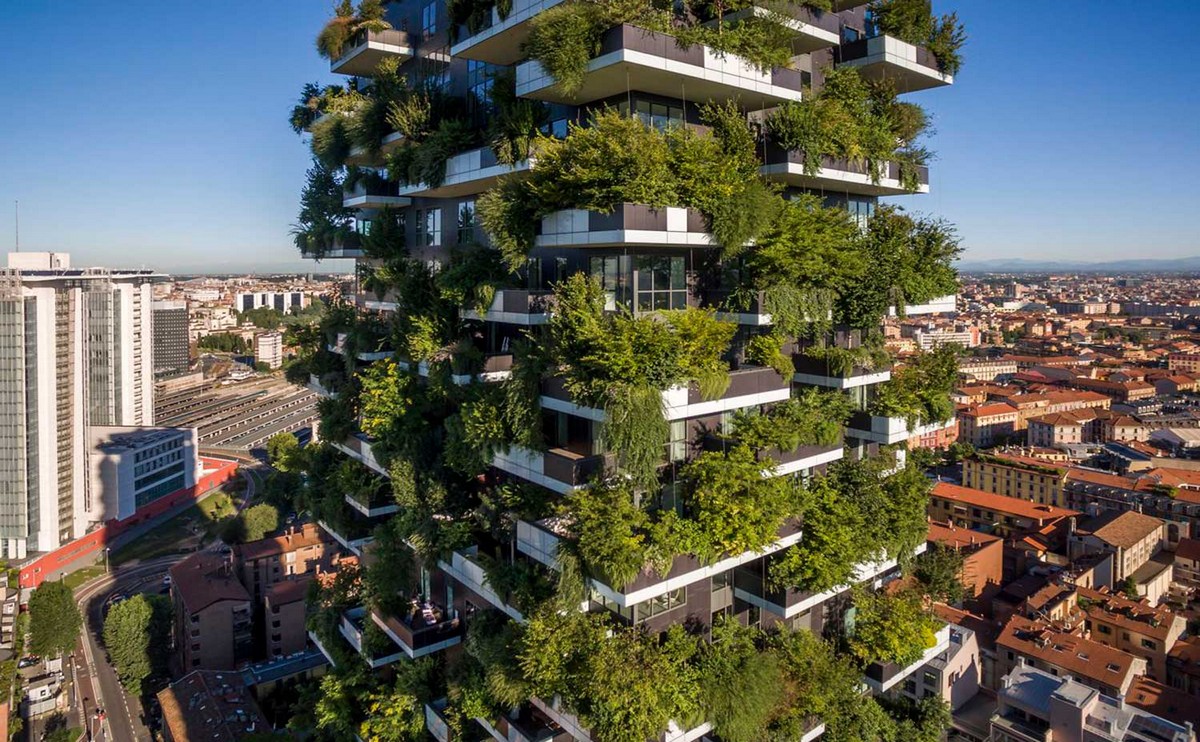Blog
The Future of Biophilic Design in Urban Construction: A Bangladesh Perspective

Table of Contents
- Introduction to Biophilic Design
- Why Bangladesh Needs Biophilic Cities
- Key Principles of Biophilic Design
- Innovative Biophilic Technologies for Urban Construction
- Case Studies: Biophilic Projects in Bangladesh
- Challenges in Implementing Biophilic Design
- How Civil Engineers Can Lead the Biophilic Movement
- Government Policies and Future Roadmap
- Top 5 Video Courses on Biophilic Design
- Top 5 Books on Biophilic Architecture
- Conclusion
1. Introduction to Biophilic Design
Biophilic design is an innovative approach that integrates nature into urban spaces to improve well-being, productivity, and environmental sustainability. The term “biophilia” means “love of living things,” and this design philosophy focuses on creating buildings and cities that reconnect people with nature.
Why It Matters in 2025?
- Rapid urbanization in Bangladesh has led to concrete jungles with minimal green spaces
- Dhaka ranks among the least livable cities (The Economist, 2023) due to pollution and lack of greenery
- Studies show biophilic design can reduce stress by 15% and boost productivity by 8%
2. Why Bangladesh Needs Biophilic Cities
Current Urban Challenges in Bangladesh:
- Air Pollution: Dhaka’s AQI often exceeds 300 (hazardous level)
- Heat Island Effect: Temperatures 3-5°C higher than rural areas
- Mental Health Crisis: 18% of urban residents suffer from depression (WHO, 2023)
- Biodiversity Loss: Only 8.5% green cover in Dhaka (DoE, 2023)
Benefits for Bangladesh:
✔ Improved Air Quality (Plants filter pollutants like PM2.5)
✔ Lower Urban Temperatures (Green roofs can reduce heat by 4-7°C)
✔ Mental Health Boost (Nature reduces stress and anxiety)
✔ Economic Value (Biophilic offices increase employee productivity by 6-15%)
3. Key Principles of Biophilic Design
| Principle | Application in Bangladesh |
|---|---|
| Natural Light | Large windows, light shelves (e.g., Bashundhara Headquarters) |
| Indoor Plants | Vertical gardens in apartments (e.g., Dhanmondi Sky Villa) |
| Natural Materials | Bamboo flooring, jute wall panels |
| Water Features | Reflecting pools, rainwater walls |
| Visual Connections | Balconies with garden views |
| Ventilation | Cross-ventilation designs (traditional Bengali “baithak” style) |
4. Innovative Biophilic Technologies for Urban Construction
A. Living Walls (Vertical Gardens)
- Example: Dhaka’s Gausia Market retrofitted with 200 sqm green wall
- Benefits: Reduces indoor temps by 3-5°C, absorbs 40% more CO2
B. Green Roofs
- Best for: Commercial buildings (e.g., Square Hospital expansion)
- Cost: ৳500-800/sqft (30% govt. subsidy available)
C. Permeable Pavements
- Solution for: Dhaka’s waterlogging crisis
- Materials: Porous concrete, grass pavers
D. Bio-Facades
- Innovation: Algae-powered walls (under research at BUET)
- Function: Generates oxygen + biofuel
E. Smart Indoor Gardens
- Tech: Hydroponic systems with IoT monitoring
- Pioneer: Urban Farming Bangladesh (FarmBox installations)
5. Case Studies: Biophilic Projects in Bangladesh
A. Jamuna Future Park (Dhaka)
- Features:
- Central indoor garden atrium
- Natural light optimization
- Impact: 22% lower HVAC costs
B. University of Asia Pacific (Green Campus)
- Innovations:
- Rooftop gardens
- Rainwater-fed ponds
- Result: 30% cooler than surrounding areas
C. Chittagong Hill Tracts Eco-Resorts
- Design:
- Bamboo structures
- Tree-integrated buildings
- Tourism Impact: 40% higher occupancy rates
6. Challenges in Implementing Biophilic Design
| Challenge | Solution |
|---|---|
| High Initial Costs | Govt. subsidies (e.g., IDCOL green financing) |
| Maintenance Requirements | Training programs for gardeners |
| Space Constraints | Vertical gardening systems |
| Lack of Expertise | University courses (e.g., BUET’s sustainable architecture program) |
| Building Code Limitations | Update National Building Code to include biophilic standards |
7. How Civil Engineers Can Lead the Biophilic Movement
Education:
- Pursue LEED GA/AP with biophilic specialization
- Attend workshops by Bangladesh Green Building Council (BGBC)
Design Practices:
- Use BIM software for sunlight/wind flow analysis
- Specify local materials (bamboo, jute composites)
Advocacy:
- Lobby for tax breaks for green buildings
- Develop low-cost biophilic prototypes for slum areas
8. Government Policies and Future Roadmap
Existing Initiatives:
- Dhaka Structure Plan 2035 (5% green space mandate)
- IDCOL Solar Program (funding for green roofs)
Recommendations:
- Biophilic Design Guidelines in building codes
- Tax incentives for vertical gardens
- Public awareness campaigns
9. Top 5 Video Courses on Biophilic Design
- Biophilic Design: Buildings That Connect People with Nature (Udemy)
🔗 https://www.udemy.com/course/biophilic-design/ - Sustainable Urban Design (Coursera – University of Virginia)
🔗 https://www.coursera.org/learn/sustainable-urban-design - Green Roofs and Living Walls (LinkedIn Learning)
🔗 https://www.linkedin.com/learning/ - LEED v4.1: Biophilic Strategies (USGBC)
🔗 https://www.usgbc.org/courses - Tropical Architecture: Designing with Nature (edX)
🔗 https://www.edx.org/course/tropical-architecture
10. Top 5 Books on Biophilic Architecture
- “Biophilic Design: The Theory, Science and Practice” – Stephen Kellert
🔗 https://www.amazon.com/dp/0470163344 - “The Nature of Urban Design” – Alexandros Washburn
🔗 https://www.amazon.com/dp/1616891403 - “Sustainable Design for Tropical Climates” – Thomas Spiegelhalter
🔗 https://www.amazon.com/dp/0415840617 - “Bangladesh Architecture: A Sustainable Future” – Fuad H. Mallick
🔗 https://www.amazon.com/dp/9843345670 - “Vertical Gardens” – Patrick Blanc
🔗 https://www.amazon.com/dp/0500342763
11. Conclusion
Biophilic design isn’t just an aesthetic trend—it’s a necessity for Bangladesh’s urban survival. By integrating nature into construction, we can:
- Combat air pollution and heat islands
- Improve mental health and productivity
- Create climate-resilient cities
Call to Action:
- Engineers: Incorporate biophilic elements in your next project
- Developers: Explore green roof financing options
- Policymakers: Update building regulations
Have you seen biophilic design in Bangladesh? Share examples in the comments!
